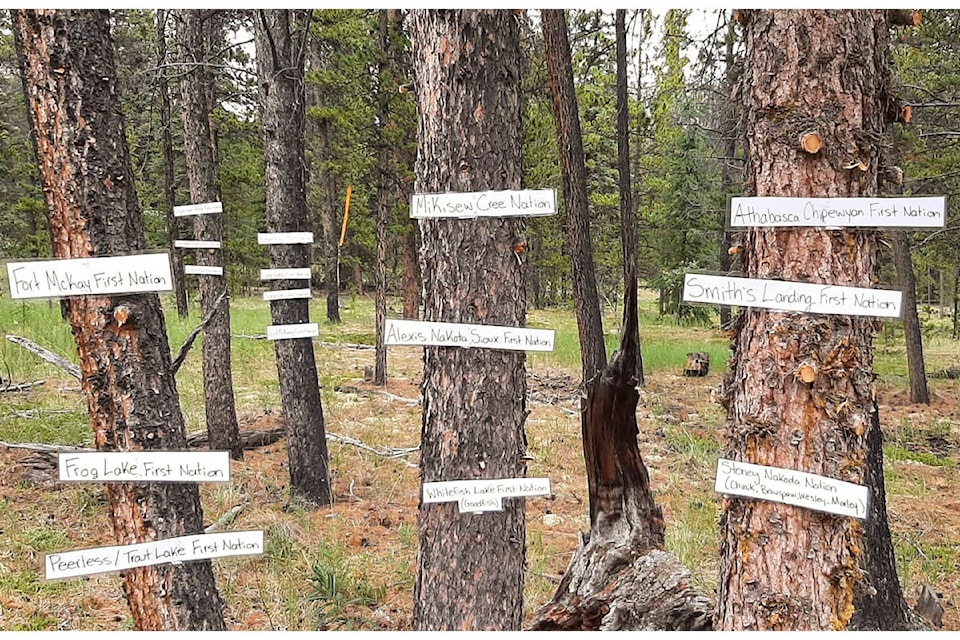The Lorne Mountain Community Association set up a Canada Day Reflection Walk, which will be held until August.
People can arrive at the Lorne Mountain Community Centre and walk through “Canada amongst the Indigenous Traditional Territories within each region.”
Participants will begin in the Yukon, travel through the other two territories before arriving in British Columbia and heading east. Stapled through the trees are the names of the First Nations that call those regions home.
It was an idea that came to fruition even before discovery of unmarked graves at several former residential schools spurred nation-wide calls for the cancellation of Canada Day in favour of sober reflection on the country’s history.
“Before the residential school graves were found we were thinking of changing the experience of the day to include more Indigenous ways into Canada Day,” said Lyndi Proudfoot, executive director of the Lorne Mountain Community Association.
After the graves were found, Proudfoot said Canada Day couldn’t have been a happy day. Instead, it was a day that needed somber reflection.
“It was a big change of direction for the centre and had to go through the board to get it going,” said Proudfoot. “It was very last minute but everyone was keen. Perspectives change and history need to be recognized.”
It was a large volunteer effort put into the walk, said Proudfoot. The Ontario and Quebec sections of the walk were only recently finished over the July 16 weekend.
The walk, based on Indigenous traditional territories, brought up lots of interesting information, said Proudfoot.
“Finding accessible Indigenous Traditional Territories maps was easier in some regions than others,” said Proudfoot. “Perhaps this is due to differences in the colonial history across the country.”
After finishing the walk in Newfoundland, orange arrows will point you back to the community centre where you will be met with a prompt.
“The way forward in Canada looks like…”
Proudfoot said there is also a question list which includes, “What traditional territory do you live in now? What territory did you live in growing up? If you aren’t Indigenous, what traditional territory did your ancestors settle on?”
Orange sticky notes are provided and people can post their answers outside the community centre.
“The goal is to have Yukoner’s experience walking through the Indigenous Traditional Territories that are Canada, and reflect upon where they live and where they come from,” said Proudfoot. “As Canadians we should be scrutinizing colonization’s distressing role and what that means for moving forward into the future.”
If you can’t make it out to the Lorne Mountain Community Centre off the Annie Lake Road, you can email your answer to the prompt to the Lorne Mountain Community Association.
Contact John Tonin at john.tonin@yukon-news.com
